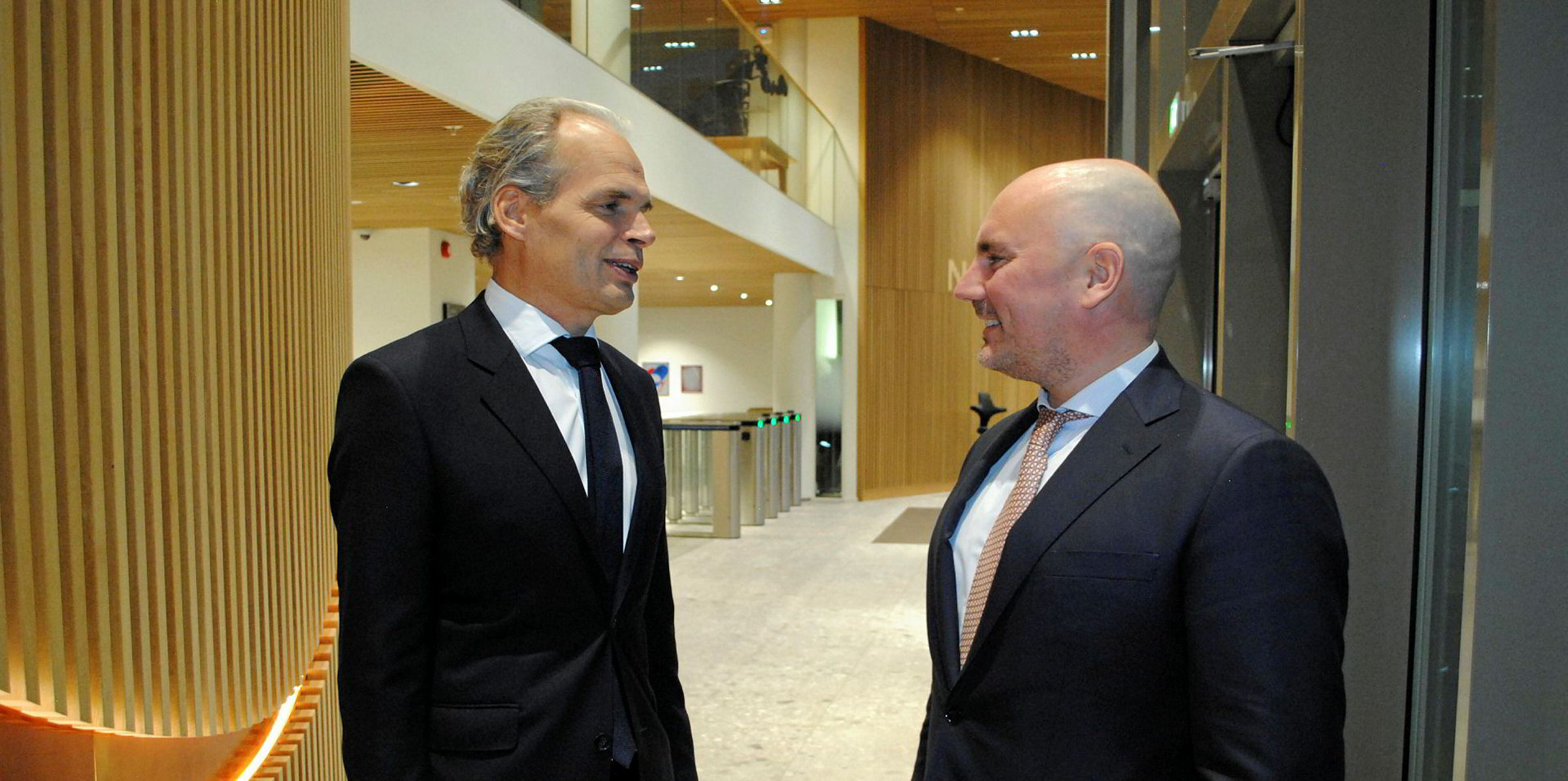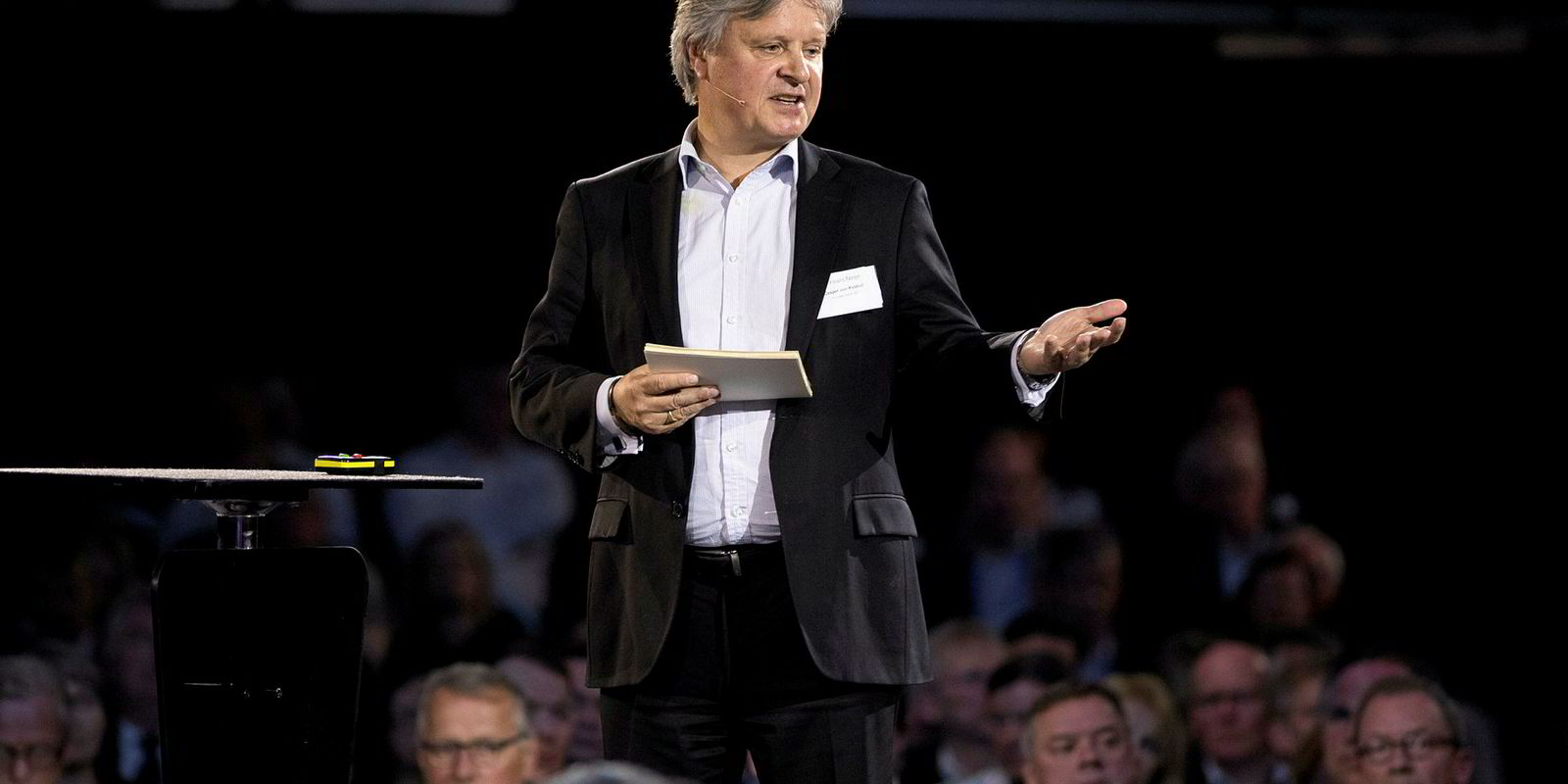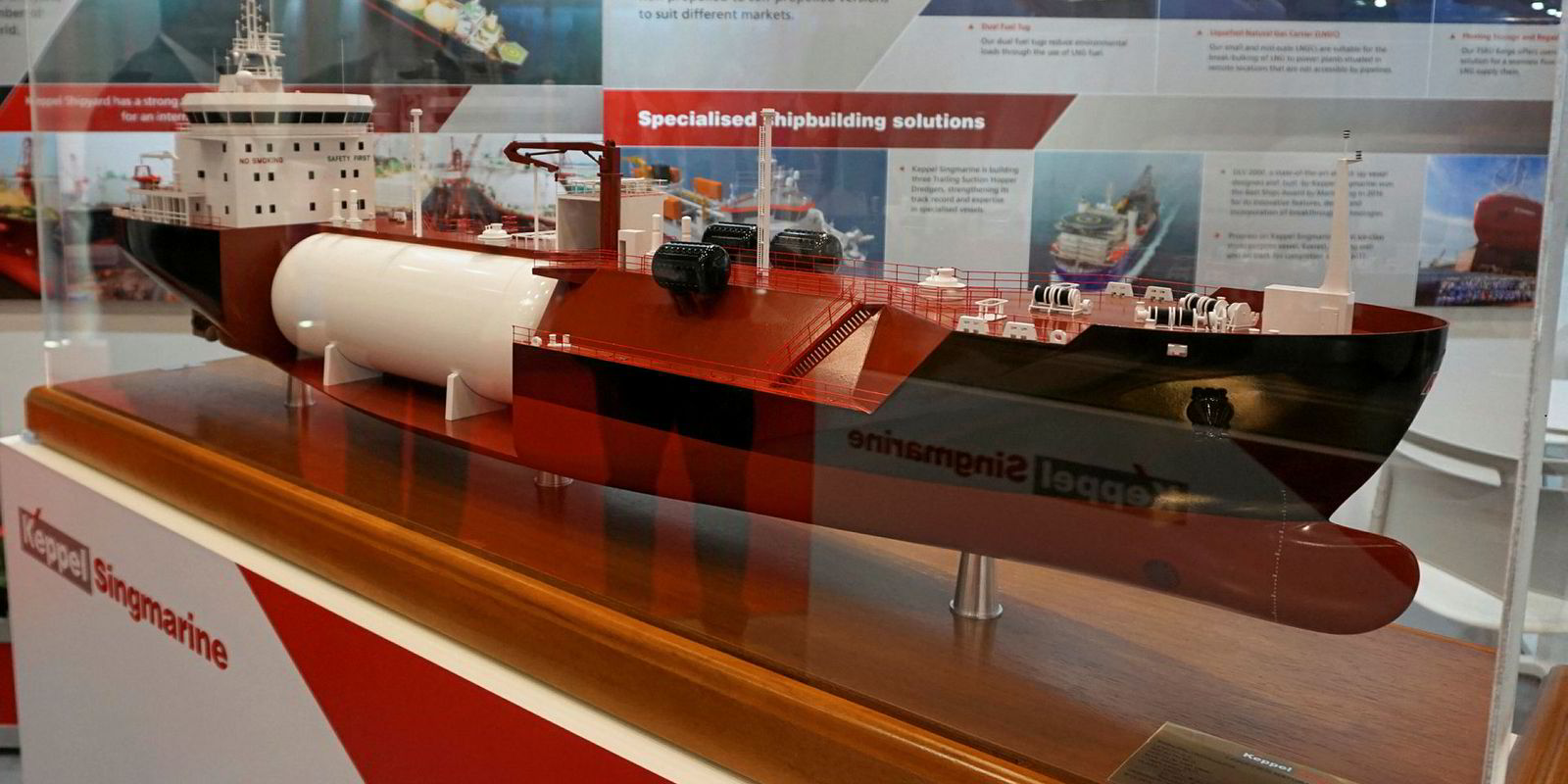Nordea has boosted its activity in shipping and offshore this year, reversing its behaviour over the past half-decade.
The Nordic bank pledged to increase business in one of its core sectors after Thor-Erik Bech and Geir Atle Lerkerod took over as joint heads of division when Hans Christian Kjelsrud moved to SEB in June.
Lerkerod and Bech were appointed at a time when the bank wanted to take a larger stake in shipping transactions. And with its clients also enjoying an active year, the increased business is being seen on the bottom line, they say.
“There is more activity this year than previous years,” Bech tells TradeWinds during a joint interview in London. “So our slight change in being more proactive and forward-leaning has been well timed in that sense.”
While official numbers have not been released for 2018, he says Nordea has been involved in “almost 50% more in terms of transaction amounts this year” compared with last year.
Much higher volume
“That is not to say that we have added on the same amount in terms of what we have put on our balance sheet,” he adds. “But we are involved as an arranger of syndicated transactions and we see a significantly higher volume. We also see ourselves taking a bigger part than what we did before.”
Bech says the increase in activity is not a sign that all banks are now far more aggressive in ship lending. However, “leading, transparent companies” will have experienced increased appetite from banks that have remained active in the market as that pool of clients has shrunk.
“The flight to quality has created a situation where the top names have a lot of interest from banks, while the slightly smaller owners probably experience more challenges in getting bank financing and have to look for leasing and other sources of finance,” he says.
One notable piece of shipping business for Nordea this year was its role in the $1.13bn takeover of UN Ro-Ro by DFDS. It provided debt and led a $160m equity issue.
Nordea had an €8.6bn ($9.8bn) shipping and offshore loan book at the end of the third quarter. Tankers accounted for 25%, gas tankers 15% and dry cargo 14%. Drilling rigs and supply vessels both stood at 8%.
“In terms of our appetite, we follow the clients, but we have skewed also more toward what we think will be segments that will prosper going forward,” Lerkerod says.

“We have done a few transactions on the LNG side, and we see more coming. That is one of the areas. That’s not to say we don’t do the others, but we want to do even more on that side.”
One known piece of LNG business was the bank’s role in a private placement undertaken by Avenir LNG, the small-scale vehicle backed by Stolt-Nielsen, Golar LNG and Hoegh LNG.
Bech says a fair bit of activity in dry bulk has involved the refinancing of structures put in place in 2016. New business was done on tankers despite depressed rates earlier in 2018, but with stronger companies that will survive challenging markets.
“We were, as most people, surprised by how strong the tanker market is at the moment. We were not putting that into the calculations when we did transactions earlier this year with the tanker companies,” he says.
“We have a well-diversified portfolio and we are doing transactions almost across all segments. But the pipeline and the larger transactions are probably more on the LNG side than the other segments.”
When the two bankers spoke to TradeWinds after their appointments in June, an improving oil price and a strengthening global economy were identified as part of the reason for increased appetite for shipping and offshore.
While Nordea chief executive Casper von Koskull acknowledged last week that global economic tailwinds from earlier in the year had eased, the bank is not about to pull in its horns again.
“This is what we live with every day. We don’t take a stance to increase exposure as you have 4% GDP growth or 3.5%. That’s not the point,” Lerkerod says. “The point is we wanted to increase our exposure a bit in the shipping side. But it’s through what the clients are doing, so we take a bigger stake in the transactions.”
Bech notes the supply side of the business was also a driver for Nordea’s shift. “When we do transactions, they are five to six and seven-year transactions most of the time. So, it’s not only the outlook on the growth in the global economy for the next year, it’s a longer-term perspective.
“We see, for instance, that a lot of the companies in the dry bulk side have strengthened their balance sheets. We think there is more awareness now in the spot-oriented businesses to have a solid balance sheet with slightly lower leverage than what we saw before. That is also part of what is making us more comfortable with being more forward-leaning.”
While Nordea is lending more to existing shipping clients, Lerkerod says it is also open to business with new clients, “but not to a large extent”.
“I don’t see it, now that banks will go further out on the risk scale and we will not,” he explains. “We will not increase exposure just to increase it, that is not the point. We have today about €9bn in exposure to shipping and offshore. Whether it’s €9bn or €8bn or €10bn, that’s not the issue. We want to do long-term business with good risk reward.”






